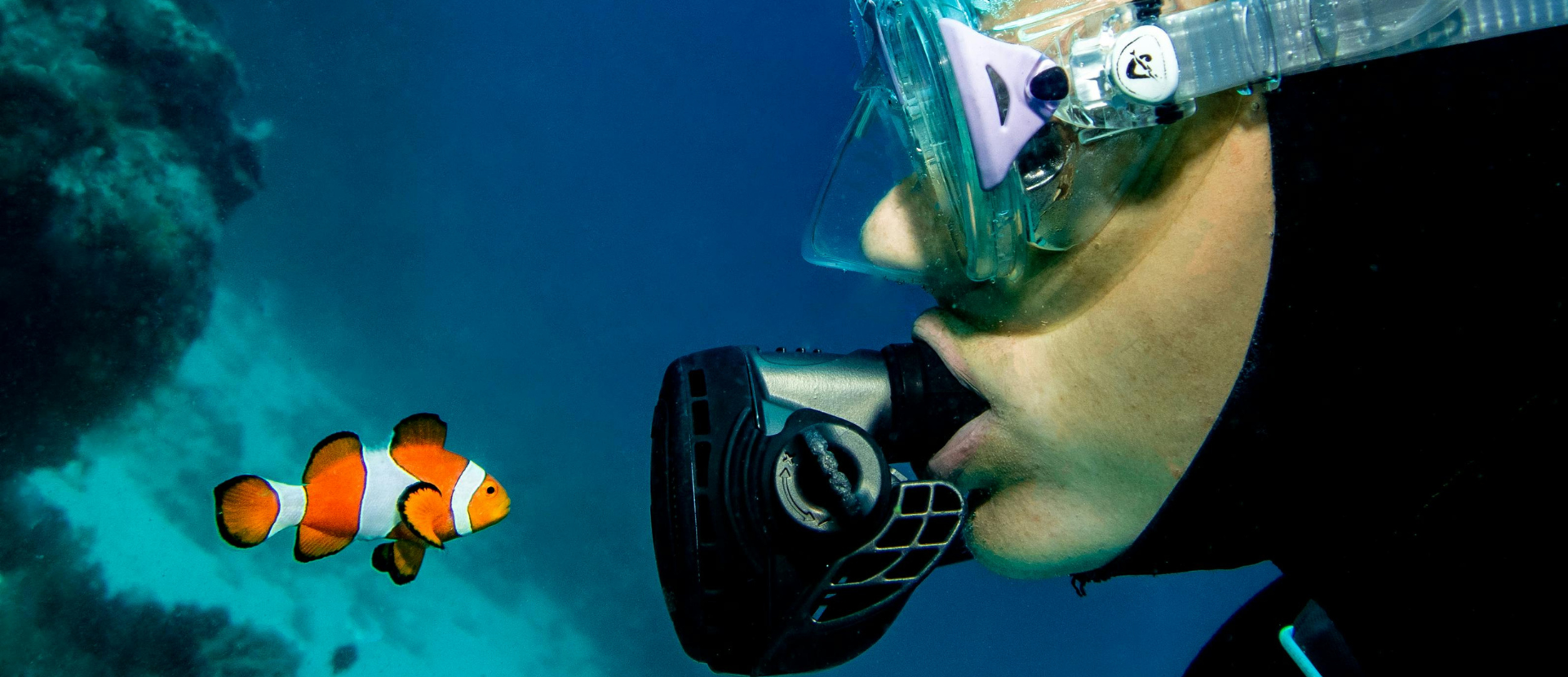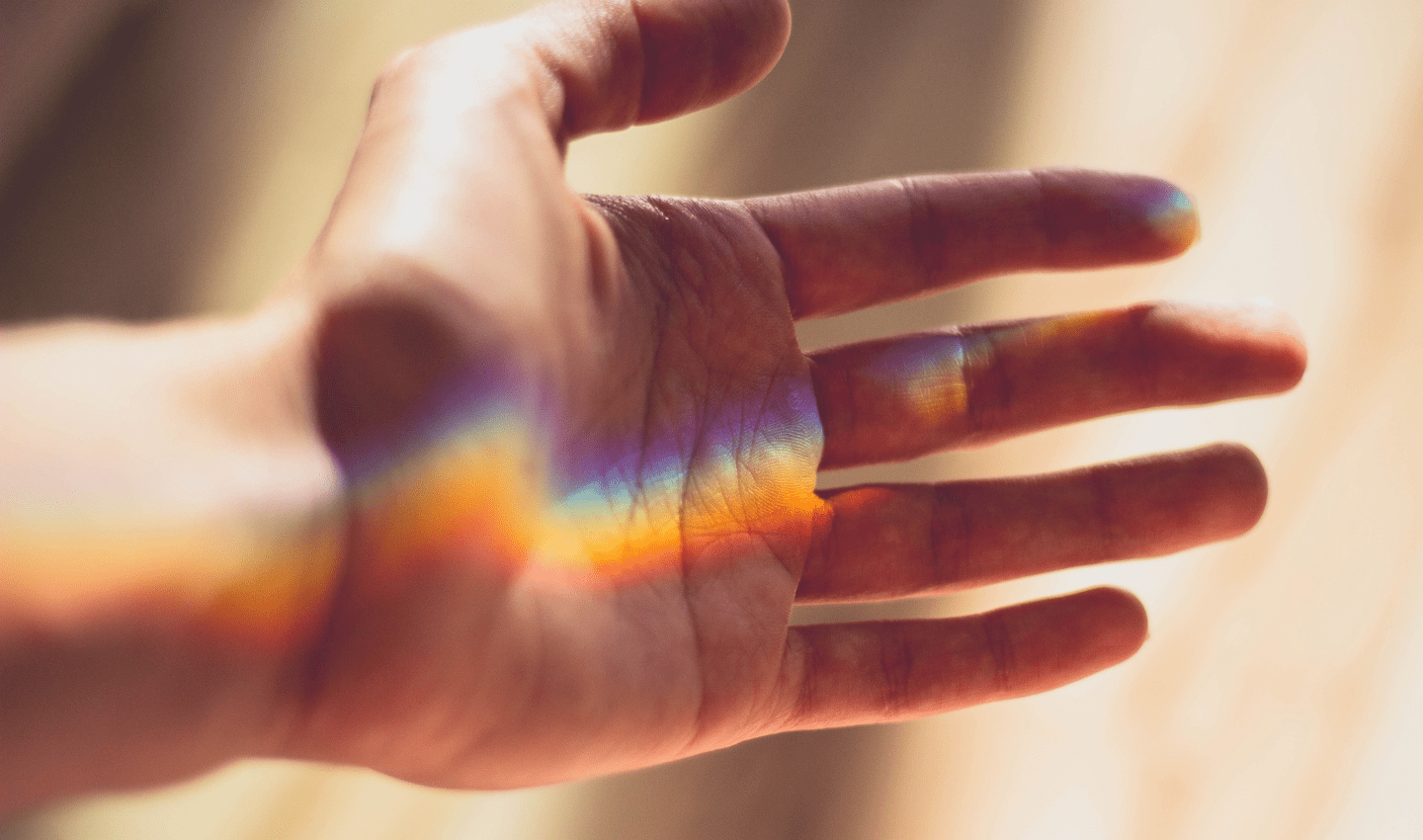- Science: Explained
Is Seaweed the Secret to Ditching Plastic? Explained.
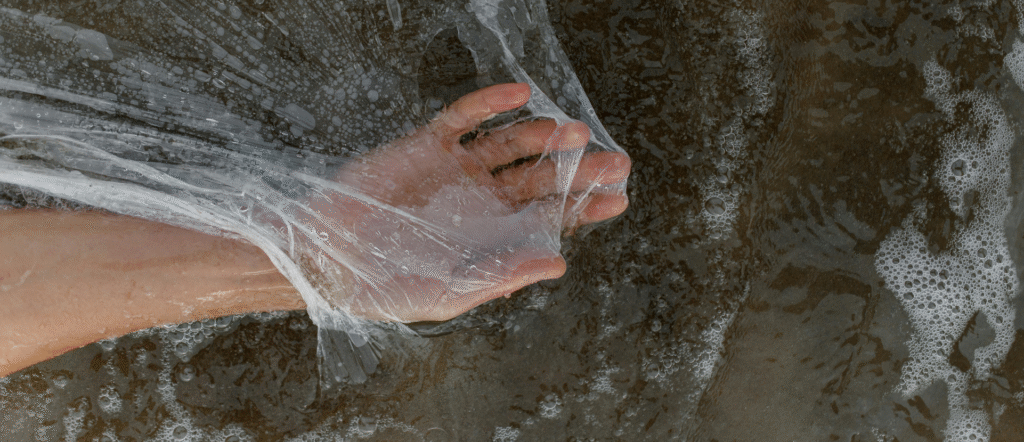
Plastics play an essential role in modern human civilisation. They are incredibly versatile, providing function in almost all aspects of our lives.
Why plastic is a problem for us and the Ocean?
Fossil-based plastics are infamous for their long-lasting impact on the environment, taking up to hundreds or thousands of years to fully break up. Along the way, they harm wildlife and people both as large plastic items and microplastics.
The impact of this is demonstrated perfectly in the Ocean, where wildlife can unknowingly eat or interact with plastics. It has been observed that every species of sea turtle has been affected by entanglement in plastic.
Plastics have another big problem. They’re sourced from oil, which contributes to their damage to the environment. 3.4% of global emissions were contributed by the plastic lifecycle in 2019, with 90% of that being emissions from production and converting fossil fuels into plastic making materials.
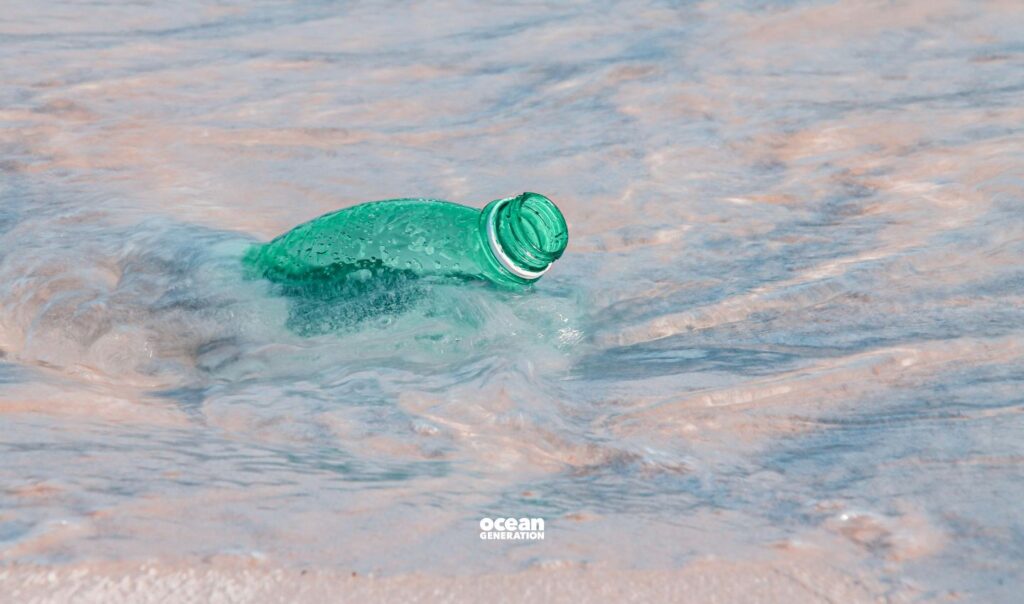
What are microplastics?
Microplastics are plastic particles less than 5mm in size formed from the breakup of plastic. They’re found across the planet, from deep in the Ocean to the snow high in the mountains. They’ve even been found in the human body. We don’t fully know yet what that means for our health, but we do know they harm marine life and can travel up the food chain.
Single use plastics, like plastic bags and straws, are big contributors to plastic waste, making up approximately half of all plastic waste. We only use them once and then throw them out, which means more and more plastic needs to be made to maintain supply.
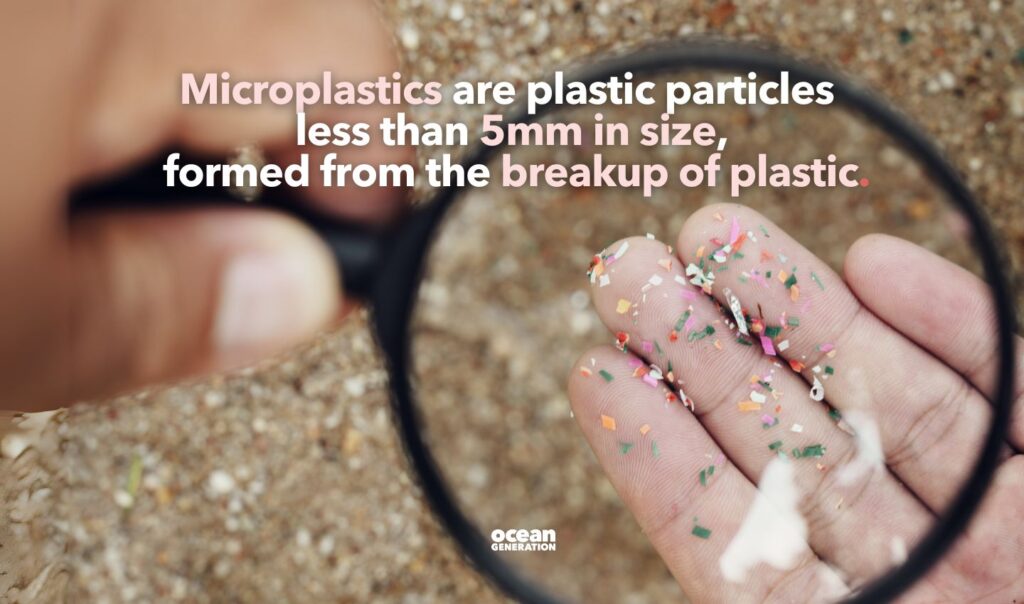
What is the solution to our plastic usage problem?
Recycling is one solution to this problem, but in 2019, the OECD estimated that only 9% of plastics are recycled.The rest is disposed of in landfill sites (50%), incinerated (19%), or goes unregulated into uncontrolled landfills, fires or the environment, including our Ocean (22%). On top of this, not all plastics are recyclable. Is there another solution?
What are bioplastics?
According to European Bioplastics, “bioplastics” are either bio-based, biodegradable, or both. Bio-based plastics are plastic alternatives which, rather than using fossil fuels to source the plastic, use biological feedstock (materials) like starch or cellulose.
Bio-based plastics are not necessarily biodegradable. Biodegradability has no clear definition or criteria, but in general, a product is biodegradable if a substance can be broken down into water, biomass and gasses. As a result of this definition, biodegradable fossil-based plastics can be considered as bioplastics.
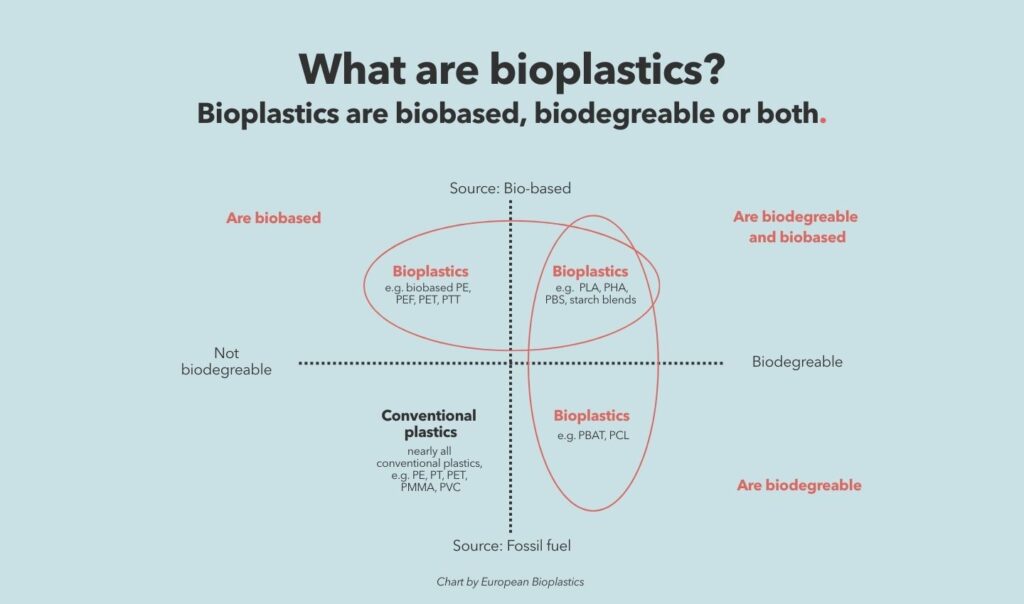
What are the different types of bioplastics?
There are 3 distinct generations of bioplastics, all defined by what they’re made of:
- 1st generation bioplastics use food crops like corn or soybeans.
- 2nd generation bioplastics use non-food crops like grass and wood.
- 3rd generation bioplastics use seaweed and algae.
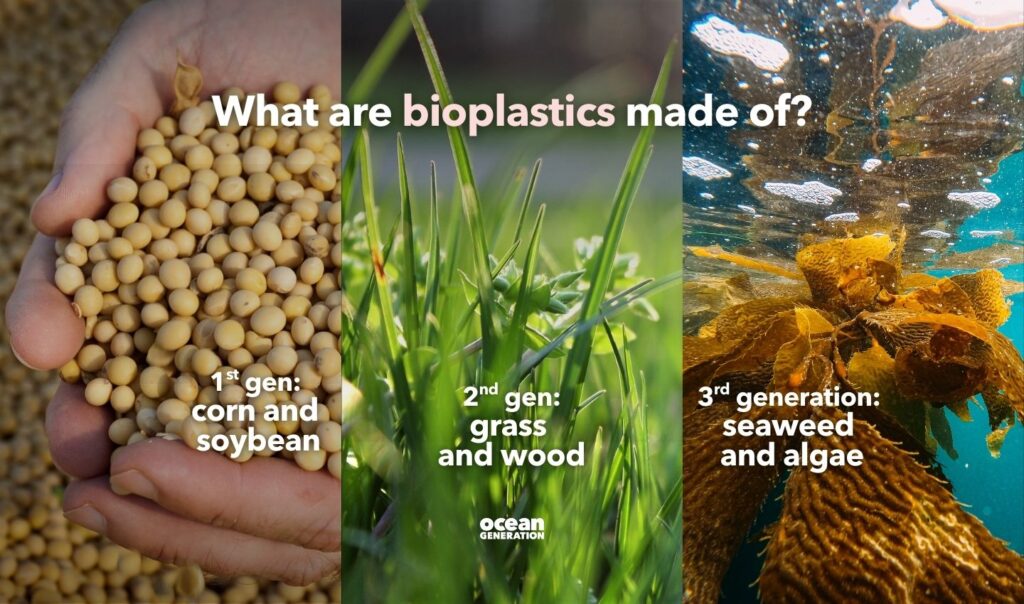
What’s the major difference between using seaweed and crops?
The major difference between crop-based and seaweed-based bioplastics is where they are planted.
The first two generations of bioplastics use fertile land which could be used for growing other crops.
Seaweed bioplastics are bio-based plastics and derived from seaweed. Seaweed bioplastics don’t have the same problems as the other generations as seaweed grows in the Ocean (which there is much more of than fertile land on Earth), and require only sunlight, atmospheric CO2 and the naturally nutritious waters of the Ocean.
They are a relatively new discovery; the first seaweed bioplastics company was established in 2010. Lady Gaga’s music career began before bioplastics were commercial.
How are seaweed bioplastics made?
The first step is letting the seaweed spores grow before they are put into a seaweed farm. They are then harvested a few months later.
The seaweed contains molecules that can be extracted via chemical processes. These have gelling and film-making (like plastic wrap, not movies) properties which make them useful in bioplastic production.
The extraction process leaves behind residuals. These leftovers can be turned into seaweed pellets which can feed back into the bioplastic making process, reducing waste. They can also be converted into methane which comes with the disadvantage of being a greenhouse gas. However, if captured and stored, it can be a carbon effective source of methane, which can be used in the chemical industry, or as a cleaner fuel than fossil fuels.
Our molecules can be mixed with other substances like nanoclays or silver nanoparticles to improve strength or change properties like making them antimicrobial.
Seaweed bioplastics are already used commercially in places like food packaging – that’s pretty kelp-ful!

What is the environmental impact of seaweed bioplastics?
The life cycle assessment of seaweed bioplastics looks at its carbon footprint from harvesting it from farms in the Ocean to its disposal in bins. Pilot scale assessments (these represent full production at a smaller scale) show that their production released more carbon than plastic, however, models show that scaling up production to full scale makes their carbon output less than plastics.
What are the downsides of seaweed bioplastics?
Making seaweed bioplastics relies heavily on farming and harvesting seaweed. This may present a problem when scaling up seaweed farms, especially to the size of being able to match plastic production, if this is even possible. Seaweed farms take up space in the Ocean, and they affect organisms that are living in areas where farms are viable, like seagrasses and corals by blocking light or choking them.
This problem can be mitigated by moving seaweed farms into the open Ocean and optimising growth by growing two different species in the same space. This can be done by growing buoyant kelp and non-buoyant seaweed next to each other to best use space.
Seaweed can also wash onto the coast from farms and decay, releasing pollutants that were absorbed over the life of the seaweed, affecting the local environment and limiting biodiversity.
There is also the problem that not all bioplastics are biodegradable. While it may be entirely possible that seaweed bioplastics specifically are biodegradable, there isn’t yet enough literature to suggest that this is the case.
On top of this, the definition of biodegradability has no specific time frame in which a material should be broken down in, meaning this vagueness could be taken advantage of.
This reintroduces a problem that we were trying to solve, simply sourcing the plastics from elsewhere.
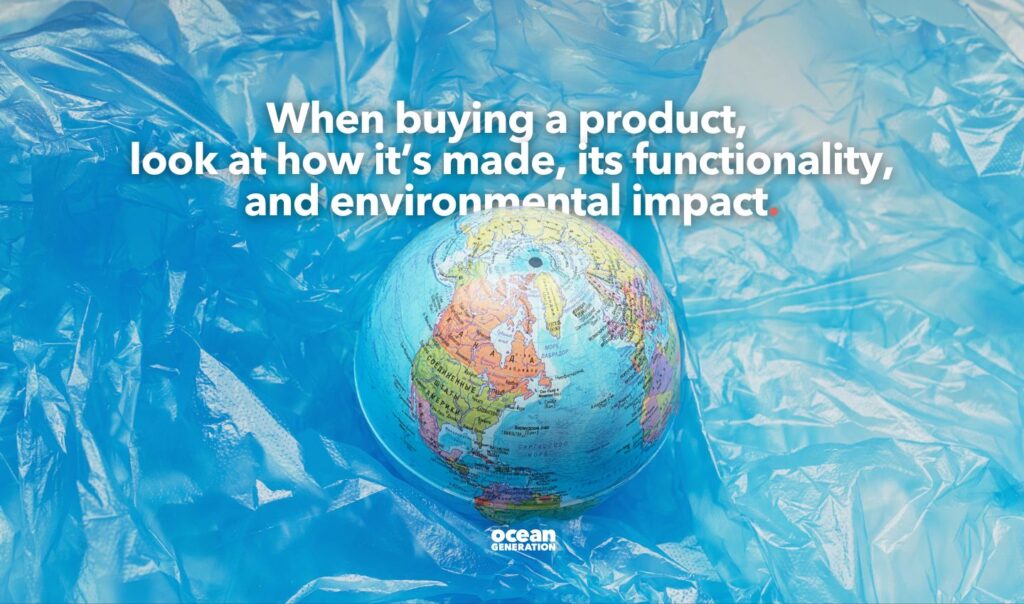
Which plastic (or alternative) is the best to choose?
There are many factors that go into considering a product: the production, the functionality (how good it is at what it’s supposed to do) and the environmental cost.
However, it can be difficult to remove bias. Take single use paper bags for example. At first glance, they seem much more environmental than single use plastic bags as they’re biodegradable, but when put into practice, they have a higher carbon footprint in production than plastic bags and aren’t as strong. So, it’s difficult to tell which of these is better.
As more research goes into seaweed bioplastics, we may find solutions to the problems associated with them and have a more accurate understanding of their impact as they are produced on a larger scale. For now, it is better to avoid single use items altogether, and to use seaweed bioplastics where available.


